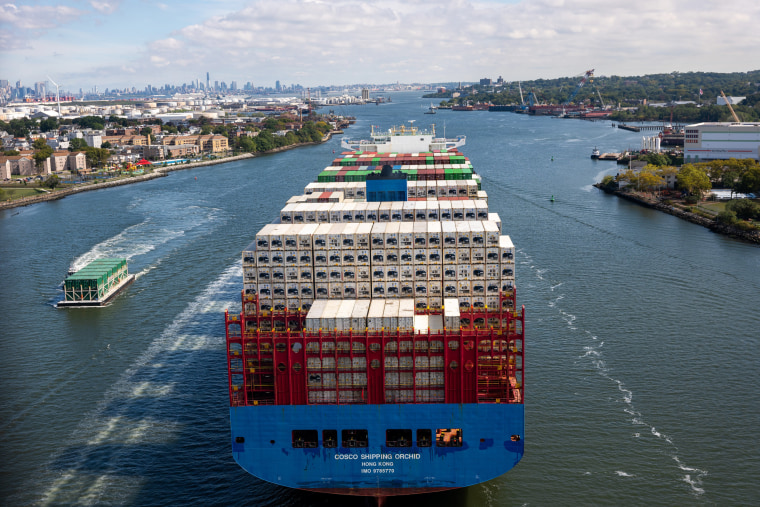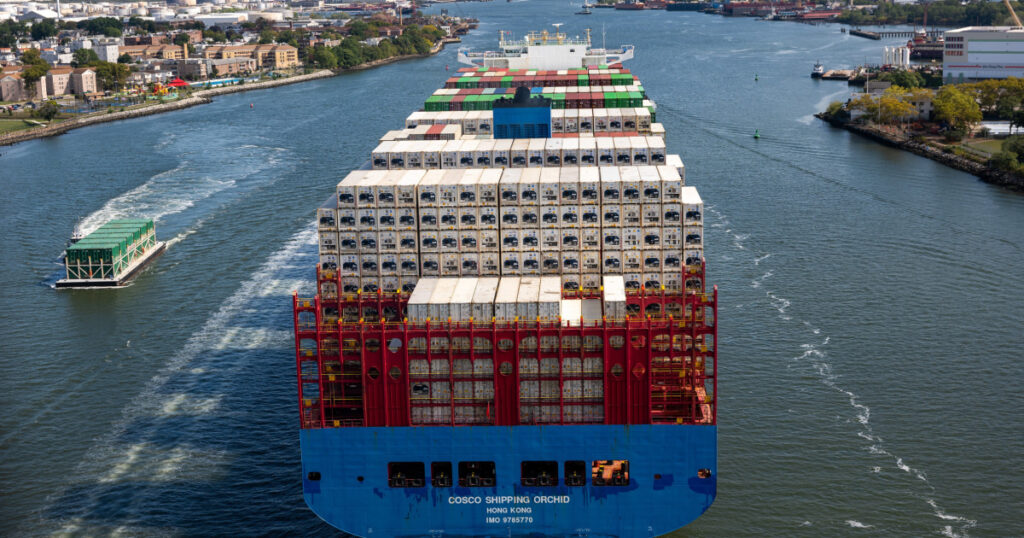Tens of thousands of longshore workers went on strike after midnight, shutting down major ports along the East and Gulf Coasts and potentially disrupting deliveries of everything from agricultural products to auto parts.
Businesses and logistics companies are taking proactive steps to cushion the impact, so consumers won’t feel the pinch until the strike continues for several weeks. But analysts and business groups have warned that the shutdown could cost the U.S. economy anywhere from hundreds of millions of dollars a day to as much as $4.5 billion.
These ports handle about half of the United States’ ocean imports, and various estimates say between 25,000 and 50,000 members of the International Longshoremen’s Association could take part in the strike. Overall, ILA has 85,000 members. Union leaders argue that major global freight forwarders have benefited from pandemic-era supply chain disruptions caused by soaring freight rates, arguing that workers are not fully sharing in the benefits. There is.
The strike would end months of heated rhetoric between the union and the United States Maritime Alliance (USMX), which represents major shipping and port operators. Unions are calling for wage increases as well as limits on automation at ports, saying it could lead to job losses. The two sides have not been negotiating in the days leading up to the potential work stoppage.

“While the ocean-going shipping companies represented by USMX hope to reap the billions of dollars in rich profits that will be available in 2024, they are offering unacceptable wage packages to ILA longshore workers. But we reject this,” the union said in a statement Monday.
Meanwhile, USMX referred to NBC News a statement released last week urging the ILA to return to the negotiating table. “The USMX values the work of the ILA and has made it clear that it has great respect for its members,” the group said.
Some industries are preparing for strikes by ordering goods in advance when it becomes clear that business closures could begin on October 1st, but analysts say If the outbreak continues for more than a few weeks, we expect more severe impacts. Trucking companies and other logistics companies are racing to get as much goods out of ports as possible before a strike occurs.
Most affected are New York and New Jersey’s vast port operations, which employ about 4,500 workers in the region. New York Gov. Kathy Hochul said her state and the Port Authority of New York and New Jersey had expected a strike but warned of the potential impact.
“We are working around the clock to move critical cargo such as food, medicine, and other essentials out of our facilities. We are also working closely with the commercial trucking industry to ensure these items arrive. ” she said on Monday. their destination. ”
Business groups are calling on President Joe Biden to intervene under the 1947 Taft-Hartley Act. Under this authority, Mr. Biden could seek a so-called 80-day “cooling-off period” to force longshoremen to continue working.
However, although the White House has been in contact with the ILA and USMX in recent days, the president has no intention of invoking the law. It also comes as Democratic Vice President Kamala Harris seeks to maximize union support against Republican former President Donald Trump, with 35 days left until Election Day, and any intervention could threaten organized labor. The relationship may become unstable.
“I don’t trust Taft-Hartley because this is collective bargaining,” Biden told reporters Sunday.



